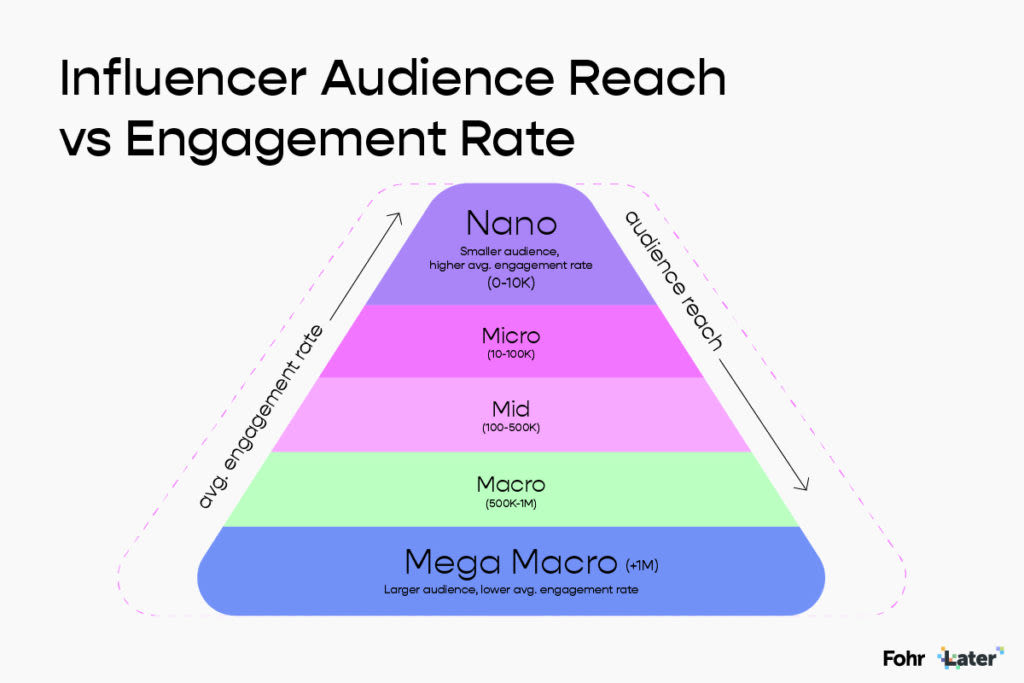Micro-Influencers: The Key to Your Brand’s Success?
by Anvil on January 20, 2022Digital Marketing
Often when a brand considers working with an influencer, they start by looking for someone with the largest possible following. While there are tons of benefits to working with a mid or macro-influencer (100,000-1m followers), or even a mega-influencer (1m+ followers), it may not necessarily be the best strategy for your brand.

Micro-Influencers are defined as an individual who has between 10,000 and 100,000 followers on social media. They are typically not a public figure, expert, or celebrity, but rather an everyday person. This makes them incredibly relatable, often with strong ties and influence in their community. There are many benefits to working with a micro-influencer, with three key benefits discussed further below:

Affordability
One rather obvious benefit to working with a micro-influencer is affordability. While many influencers with large followings can charge $1000+ per post, micro-influencers charge an average of about $100 per post. This makes them easily accessible to smaller businesses with less available marketing budget. However, the appeal of micro-influencers does not stop with small businesses. Recently, brands such as Coca-Cola have seen great success partnering with micro-influencers. In their most recent micro-influencer campaign, Coca-Cola partnered with 12 Belgian Instagram influencers, all with less than 100,000 followers. The campaign garnered great attention for being groundbreaking in its approach and had a 9.1% engagement rate.
Engagement
Another notable, and arguably key benefit to working with micro-influencers is engagement. Typically, they have very high rates of engagement from their audiences. According to this study, engagement actually gets better with the fewer followers a person has. In general, Instagram users have seen falling engagement rates in recent months, a concerning metric for influencer campaigns as this is a KPI that indicates a campaigns success. Luckily, this has not touched micro-influencers who still see engagement rates averaging 10%, while a macro-influencer would be lucky to see half of that. Further, micro-influencer marketing is outpacing traditional influencer marketing and is expected to continue to do so.
Authenticity
Another key benefit of partnering with a micro-influencer is trust. Recent data has shown that this is one of the primary concerns of consumers when choosing a brand. According to this survey, 92% of customers trust a micro-influencer more than a traditional ad or an endorsement from celebs. This is especially true in younger generations, with 94% of Gen-Z believing companies should help address social and environmental issues. Because macro-influencers and celebrities partner with so many brands and consumers know they are being paid for these partnerships, it becomes hard to trust them. For example, if a macro-influencer is touting a health tea one week and partnered with a candy brand the next, their voice no longer seems authentic. Micro-influencers partner with fewer brands, and often have a niche, making it easier to target specific audiences. This leads directly to another great benefit of working with micro-influencers: the ability to target a specific audience. Because micro-influencers work with fewer brands, and often will reach out themselves to the brands they partner with, it is likely they will have a specific area of interest, making it easier for brands to target that demographic while also lending credit to their authenticity.
While there are many more benefits of working with a micro-influencer that could be explored, this gives an overview of some of the top points of interest that should be considered when partnering with an influencer. If you are interested in seeing how a micro-influencer could help you reach your 2022 marketing goals, contact us today to hear more about our influencer marketing program!
